Emergence of Mahajanapadas | Famous Books for UPSC Exam (Summary & Tests) PDF Download
The transition from Janapadas to Mahajanapadas
In the Vedic Age, the Janapadas were the prominent kingdoms in ancient India. These kingdoms were inhabited by the powerful Aryan tribes known as "Janas," signifying their significance in society. The term "Janapada" originated from the combination of "Jana," meaning "people," and "Pada," meaning "foot."
By the 6th century BCE, the number of Janapadas had expanded to around 22. This growth was fueled by socio-economic advancements resulting from the utilization of iron tools in agriculture and warfare, as well as religious and political progress. The inhabitants developed a strong attachment to their Janapada's territory rather than their tribal identity or jana. This era is also recognized as the second phase of urbanization, with the Harappan civilization being the first.
During this transformative period, the political center shifted from the western region of the Indo-Gangetic plains to the eastern side. This shift was influenced by the superior fertility of the land due to increased rainfall and numerous rivers. Additionally, this region was in close proximity to centers of iron production.
The Magnificent 16 Mahajanapadas
Here is a list of the 16 Mahajanapadas that emerged prior to the rise of Buddhism in India:

The list below provides you with the names of 16 Mahajanapadas:
- Kasi
- Kosala
- Anga
- Magadha
- Vajji
- Malla
- Chedi/Cheti
- Vatsa
- Kuru
- Panchala
- Matsya
- Surasena/Shurasena
- Assaka
- Avanti
- Gandhara
- Kamboja
Over time, the smaller and weaker kingdoms, as well as the republics, were absorbed by the more powerful rulers. Notably, Vajji and Malla were Gana-Sanghas, characterized by a government structured around assemblies and an oligarchic system within the assembly. By the 6th century BCE, only four influential kingdoms remained:
- Magadha (Key rulers: Bimbisara, Ajatashatru)
- Avanti (Key ruler: Pradyota)
- Kosala (Key ruler: Prasenjit)
- Vatsa (Key ruler: Udayana)
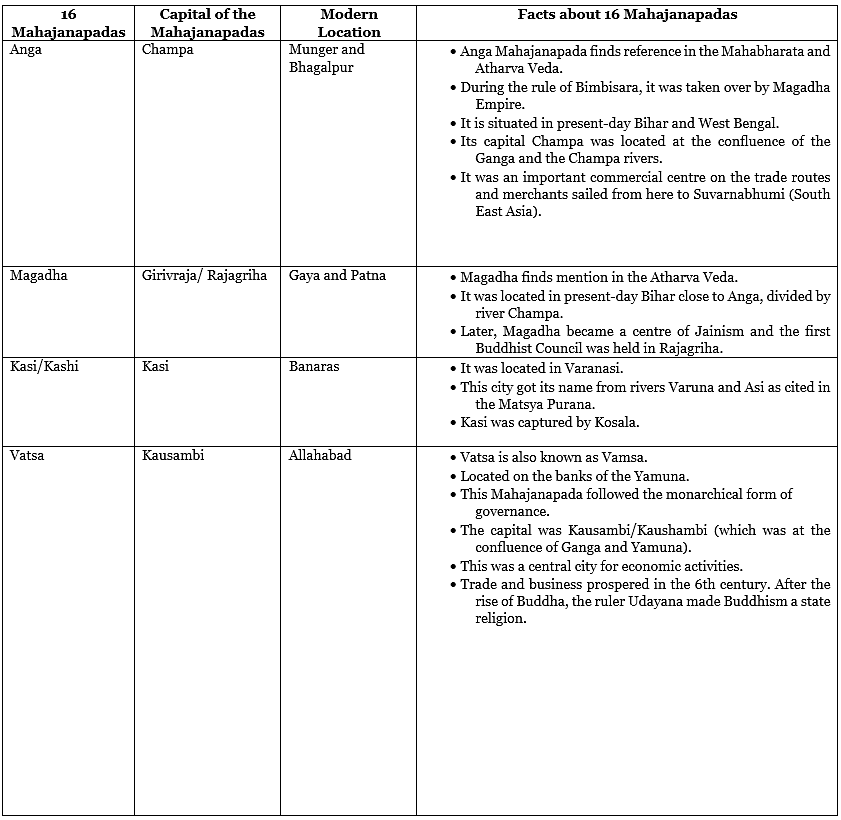
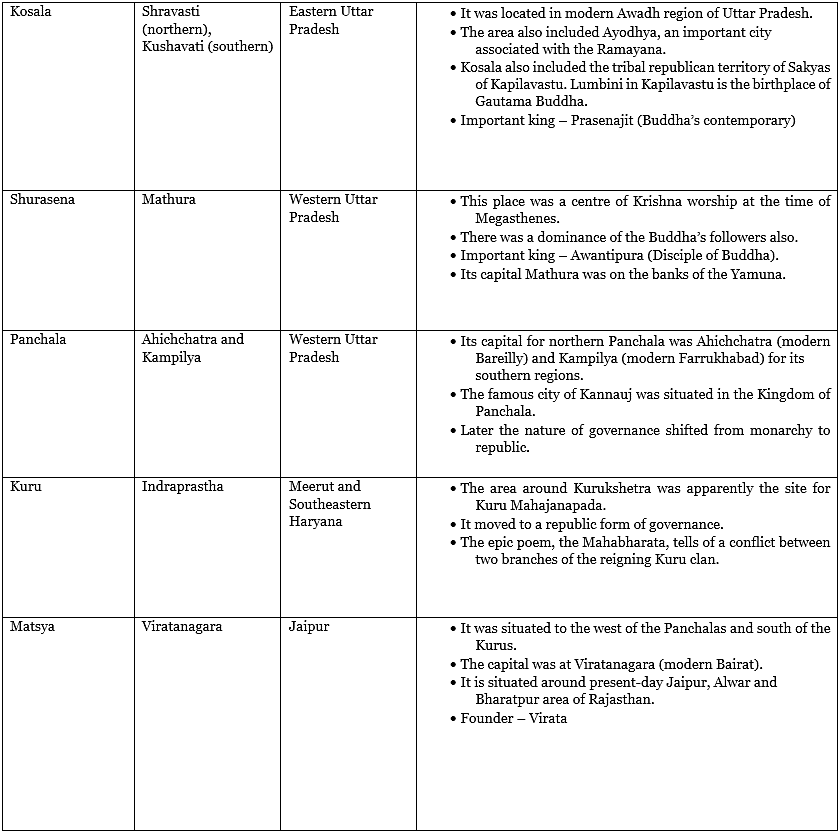
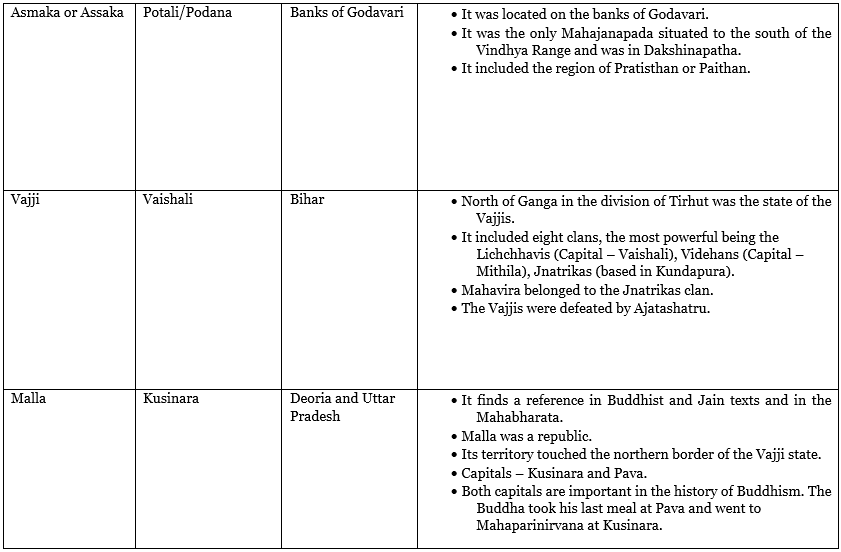
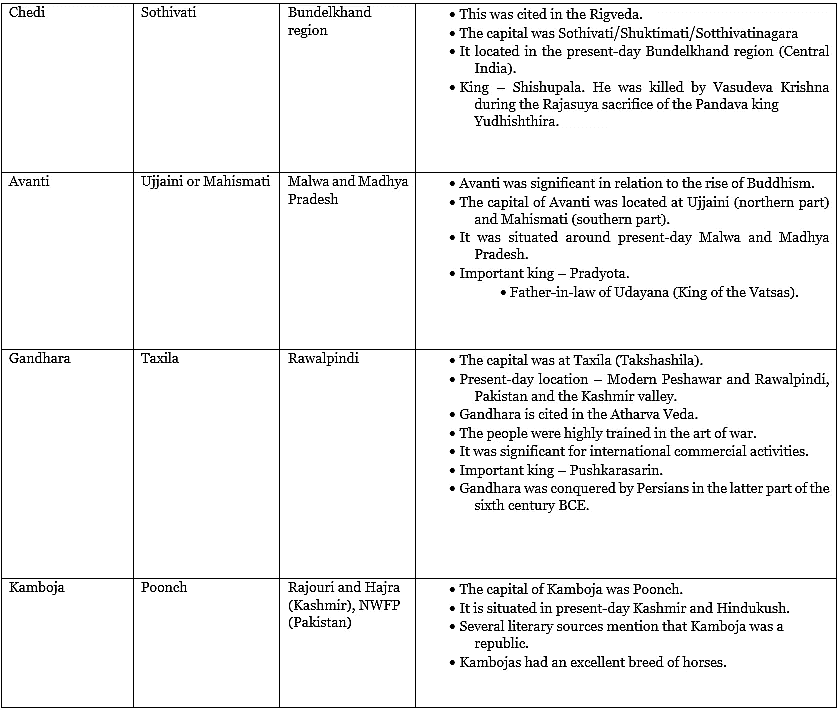
Political Structure of the Mahajanapadas
The political structure of the Mahajanapadas varied, with most states operating as monarchies while some embraced a republican system known as Ganas or Sanghas. These Ganasanghas functioned as oligarchies, where the king was elected and ruled with the assistance of a council. Notably, Vajji held significance as a Mahajanapada with a Sangha form of government. It is worth mentioning that the founders of Jainism and Buddhism emerged from republican states.
Capital Cities and Fortifications
Each Mahajanapada had its own capital city, serving as the administrative and cultural center. These cities often had fortified structures built around them to provide protection from potential invasions by other kings.
Maintenance of Armies and Taxation:
The emerging kings, known as Rajas, maintained regular armies to safeguard their territories and maintain control. Additionally, the rulers collected taxes from the people, including a share of the crop produce, typically around 1/6th, known as Bhaga. Even craftsmen, herders, hunters, and traders were subject to taxation, indicating the comprehensive nature of the tax system in the Mahajanapadas.
Agricultural Transformations:
During this period, significant changes occurred in agricultural practices. The introduction of iron ploughshares revolutionized farming techniques, leading to increased productivity. Additionally, farmers adopted the practice of transplanting paddy, wherein saplings were grown and planted in the fields instead of scattering seeds directly onto the soil. While this technique greatly enhanced production, it also required increased labor and effort.
The Significance of the 6th Century BCE:
The 6th century BCE marked a crucial period in Indian history as it witnessed a continuous political trajectory for the region. This era became the foundation for the subsequent developments and transformations that shaped the political landscape of India.
Difference between Gana-Sanghas and Kingdoms
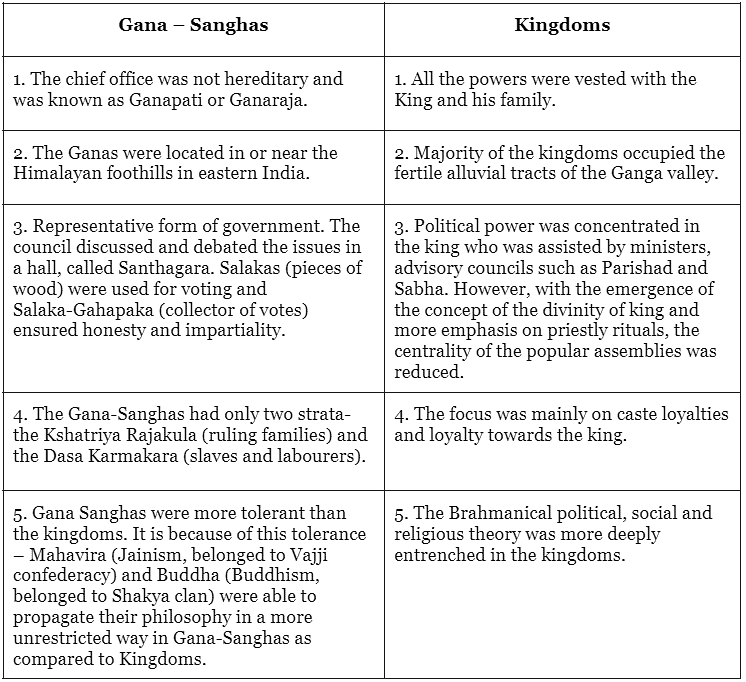
|
745 videos|1444 docs|633 tests
|

















